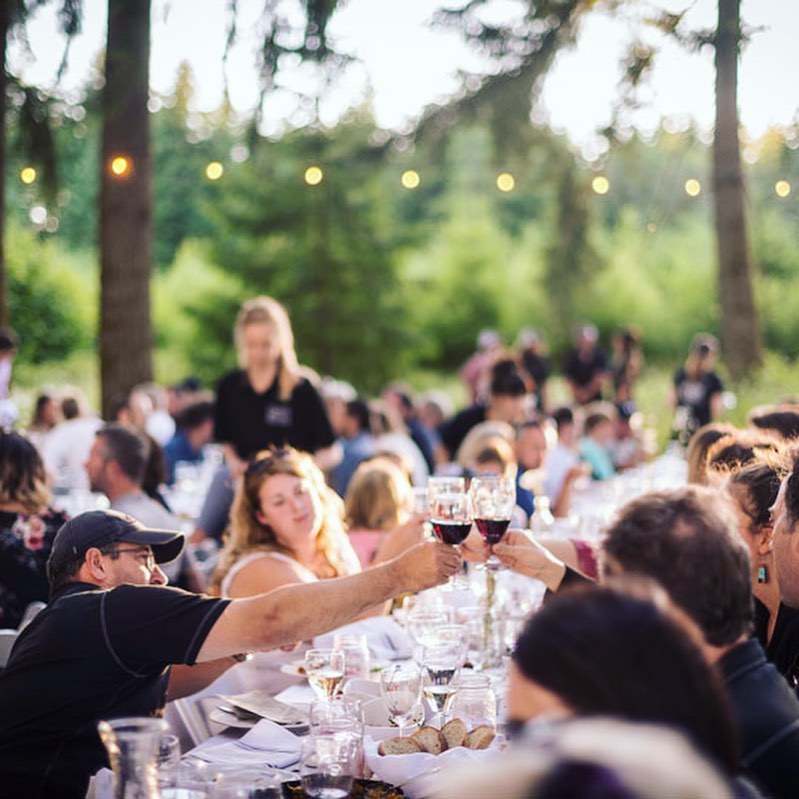How Can We Help?
Donor Relations at Urban Abundance

Donor Relations
Urban Abundance has historically been funded by a recurring charitable donation, but maintaining donor relations with individual donors, corporate sponsors, and fruit donors is paramount to ensuring program sustainability. For the Pick-a-Pear-a-thon fundraiser, donors and harvest sponsors were thanked via the program’s newsletter, on social media, in the news segment on TV, and at the kickoff party that was recorded live on social media. Donors are written thank you notes and given updates on what the program is accomplishing so as to make them feel like they’re part of something bigger.
Residential tree owners have historically been recruited at outreach events and via word of mouth. Tree owners must register their trees through the Google Form on the Urban Abundance website, providing contact info and information on tree/fruit varieties and harvest seasons. Registered tree owners and those who sign up at outreach events are added to the MailChimp mailing list.
One month before the first harvest event (typically in early July), staff sends a MailChimp message to Fruit Tree Owners list encouraging people to register their trees or update their information in the registry in preparation for harvest season.
Two weeks before each harvest event, based on the harvest schedule that fruit tree owners provide, staff/volunteers schedule tree inspections to verify the amount and quality of fruit available at each property in order to determine an appropriate harvest site/route for each harvest event. (For example: The first harvest event of the season is scheduled for August 1. Around July 15, staff/volunteers make calls to tree owners with “early August” fruit, starting with those with the most trees. They’ll ask if the homeowner would like to have their trees harvested this year, inquire about the state and amount of fruit coming on, let them know dates/times of upcoming volunteer events, and, if all seems in order, schedule an inspection.) Staff/volunteers make clear to tree owners that registration/inspection is not a guarantee of harvest, and that volunteer events will be held at sites with the most quality fruit available.
The homeowner should accompany the inspector to look at the trees, learn what the organization is looking for (amount/ripeness of fruit on trees, pest/disease issues, access issues.) The inspector answers any tree questions to the best of their ability, refers to other resources, or agrees to follow up. Some homeowners may be fine with an inspector dropping by while they aren’t home, in which case, the inspector follows up with them post-inspection to share observations and/or schedule harvesting.
Once the best harvest site/route for the event has been determined, staff/volunteers confirm with the selected tree owner(s) and send them a PDF of the harvest liability waiver. If a tree owner doesn’t get selected for harvest, they are informed of other options for people to share their fruit! Urban Abundance also hosts a Facebook group called “Urban Abundance – DIY Harvests” for tree owners and local people interested in gleaning to connect and arrange their own harvest activities. Tree owners can also reach out to local groups focused on gardening, food preservation and waste reduction, as well as Next Door, Craigslist, and local “Buy Nothing” clubs to find people interested in harvesting fruit for free.
Beyond registration and harvest-related communication, fruit tree owners are invited via MailChimp to participate in Fruit Tree Stewards educational workshops in the off-season to gain knowledge and skills for caring for their trees. Fruit tree care resources and links are available on the website and relevant articles/tips are shared on the Facebook page as well. In the future, Urban Abundance aspires to have emails w/ updates, articles/tips, local events/workshops as part of its regular communication strategy.
Donors should be thanked every time they are contacted via phone, online or in person. They are informed if a tax deduction is available for their donation and a receipt with the organization’s tax ID is provided to them post-harvest event. Donors are thanked publicly in post-event and post-harvest season social media posts and email updates. If there is capacity to include them, donors may be invited to an end of season “appreciation” event along with volunteers.


